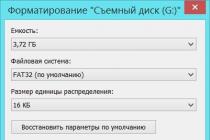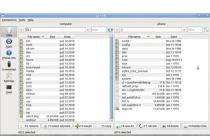POSITION
About holding open team and personal competitions
Powerlifting and bench press without equipment,
G. Podolsk and Moscow region
1. Targets and goals
Competitions are held to popularize powerlifting in the city of Podolsk and the Moscow region
Education of a physically developed younger generation and promotion of a healthy lifestyle
Attracting young people to systematic physical education and sports
Creation of motivation among adolescents and youth to engage in physical culture
Improving the sportsmanship of athletes in the city of Podolsk and the Moscow region
· Identification of the strongest athletes in Podolsk and the Moscow region
Formation of a team for performance at open team competitions in Podolsk in powerlifting
2. Date and venue
Competitions are held on November 16, 2013 at the Palace of Culture on May 1: Moscow region, Klimovsk, Zavodskaya street, 3. The start of the competition and the weigh-in will be announced additionally (by e-mail or SMS).
3. Organization and leadership
General organization competitions are carried out by the Fakel Center for Civil and Patriotic Education of Youth and the Good Lift gym, with the participation of the Podolsk branch of the Military Brotherhood and the Healthy Nation Charitable Foundation.
Direct supervision is carried out by the athletic gymnastics coach of the MU "Fakel" Popov S.A., the director of the gym "Good Lift" Yakovlev P.S. and the representative of the charitable foundation "healthy nation" Rabotkin I.F.
4. Competitors
Interested organizations and institutions are invited to participate in the competition, as well as individual athletes who have reached the age of 16, who have submitted nominal applications for participation in the competition.
The organizers reserve the right to later announce the standards for admission to the competition, with the obligatory notification of athletes (by e-mail or SMS).
The organizers reserve the right, in case of exceeding the number of applications, no later than November 9, 2013 to announce the standards for admission to competitions, with the obligatory notification of athletes by posting information in open sources, as well as sending SMS and e-mail messages.
5. The order of the competition and the conditions for submitting applications
Applications for participation in competitions must be submitted before November 9, 2013 at email address: [email protected] or via SMS message to the number +79099250337 (the cost of SMS is equal to the cost of an SMS message from your telecom operator).
Attention! Please see Appendix 1 for the correct application form.
6. The procedure for determining the winners
Attention! Refereeing of the competition is carried out according to the rules of the IPF (see Appendix 2)
Competitions are held in the open age category (Open).
in individual championship:
Women c compete in the absolute weight category, the winners (those who took 1-2-3 places) are determined by the Wilks formula.
Winners in men defined in categories up to 75kg, up to 90kg, up to 110kg and over 110 for the best result. Winners in absolute championship (athletes who took 1-2-3 places) in triathlon and bench press are determined by the Wilks formula.
In team championship 4 best results of male team members and 1 female result are taken into account
Points are awarded according to the following scheme:
1st place - 6 points
2nd place - 4 points
3rd place - 3 points
4th place - 2 points
5th place - 1 point
The winner of the team championship is the team that scores maximum amount points for all teams.
7. Winner's reward ceremony
The awarding of winners and prize-winners in the individual and team championships, who took 1-3 places in the nominations, is carried out with commemorative certificates and medals.
8. Financing
The costs associated with the organization, holding and awarding of the winners are borne by the organizers of the competition, interested organizations and sponsors. Expenses related to travel and meals of participants are borne by sending organizations. There is no entry fee.
Attachment 1
Sample application (sent by e-mail or SMS message):
1. nomination: for example, bench press or triathlon.
2. team name or note personal *
3. Full name *–
4. Year of birth *–
6th digit *–
7. best result * (for the last 6 months) -
8. age* -
9. coach -
10. contact phone number (preferably cell phone)* -
Fields marked with an asterisk are required.
Attention! All participants on the day of the competition, with them, must have visas certified by a doctor, and a passport or identity card (license, military ID). Without these documents, athletes will not be allowed to compete.
Appendix 2
Competition rules:
- Performance at competitions takes place without the use of equipment (bench shirts, overalls, knee bandages for powerlifting).
- You can use: hand bandages, belts (maximum belt width - 10 cm).
- If necessary, you can use a non-supporting bandage (on one leg or arm). Non-supporting bandages are conventional medical bandages. The bandage must be presented to the judge before use.
- Exercises are carried out according to the rules of IPF
Squats(rules and order of execution).
After removing the bar (assistants may assist), the lifter returns to the starting position.
After the athlete has taken the starting position, the judge gives the command - Squat.
The athlete squats so that the upper part of the surface of the legs at the hip joints is lower than the top of the knees. Permitted, only one attempt to make a downward movement.
The athlete must independently return to a vertical position with legs fully extended at the knees. Double getting up (“jumping”, prohibited).
As soon as the athlete takes a stationary position, the referee gives the command to return the barbell to the racks - RACKS.
- Forbidden- Error in following the Chief Judge's signals at the beginning or end of the exercise. Double rising (jumping) from the bottom position of the squat, or any downward movement while standing up. Error in bending the legs at the knees and lowering the body to such a position that the upper part of the surface of the legs at the hip joints is lower than the top of the knees.
Bench press lying on a bench(rules and order of execution)
The lifter must lie on his back with his head, shoulders and "whole" buttocks in contact with the surface of the bench. The sole and heels of his shoes must be in contact with the surface of the platform or blocks (as far as the shape of the shoes allows).
The fingers should wrap around the bar lying on the racks, while thumbs hands are located "in the castle" around the neck. This position must be maintained during
doing the exercise. Reverse grip is prohibited.
To provide firm footing, the athlete may use flat slabs or blocks no higher than 30 cm from the surface of the platform.
The distance between the hands on the bar, measured between the index fingers, must not exceed 81 cm (both index fingers must be inside the 81 cm marks).
After removing the barbell from the racks with or without the assistance of assistants, the lifter must wait for the Chief Judge's signal with the arms fully extended (“engaged”) at the elbows.
The signal to start the bench press should be given as soon as the lifter has taken a stationary position.
position and the boom will be in the correct position. The signal to start the exercise is the command - START.
After receiving the signal, the athlete must lower the barbell to the chest and hold it in a stationary position on the chest (usually the base of the sternum), after which the judge gives the command - PRESS. The lifter should then push the bar up into straight arms. After fixing the barbell in this position, the referee gives the command - STANDING.
- Forbidden– Any mistake in following the referee's commands. Any change starting position when performing an exercise (any lifting (separation) of the head, shoulders, buttocks from the bench or movement of the legs on the platform or blocks, or movement of the hands along the neck). Any downward movement of the bar during the press. Lack of squeezing the bar on fully extended arms at the end of the exercise.
6. Deadlift (rules and order of execution)
The lifter must be positioned facing the front of the platform. The bar, which is located horizontally in front of the athlete's legs, is held with an arbitrary grip with both hands and lifted up until the athlete stands upright.
Upon completion of the lift of the barbell in the thrust, the legs at the knees should be fully extended, the shoulders should be laid back.
The referee gives the command - DOWN.
Any lifting of the bar, or any deliberate attempt to lift it, is considered a set. Once the lift has begun, no downward movement of the bar is permitted until the lifter has reached a vertical position with knees fully extended. If the bar settles when the shoulders are pulled back, then this is not a reason not to count the lifted weight.
- Forbidden– any downward movement until reaching the final position. Supporting the bar with your hips while lifting up. Steps back or forward. Lowering the bar to the command. Releasing the barbell from the hands when executing the down command.
Currently, almost every site has forms with fields for the user to enter certain information. These can be forms of authorization, registration, password change, sending comments and feedback, a feedback form, payment data, questionnaires, and many others. They must meet certain requirements appearance and usability, and functionality. The speed of solving the user's problem and the overall impression of the service depend on this. A form is considered good if users do not have any questions as they fill it out.
When testing forms, pay attention to the following points:
- Is it clear what the form is for and why it needs to be filled out?
First of all, you need to make sure that the form layout is easy to understand, because a complex form or a form with a lot of fields will make users reluctant to fill it out. The form will receive more high level conversions if it has fewer fields and they are well-designed and easy to fill.
Each form should ask the user for only the necessary minimum of information, the user should always understand what specific data is expected from him and why. Therefore, in complex forms, all non-obvious fields must be provided with appropriate comments. Also, all fields can have a text placeholder, which contains a hint of what exactly needs to be specified in the field and disappears when the first character is entered. If text fields contain placeholders, then they must be centered vertically. If the form contains fields to specify personal information e.g. phone number or address, you should include an explanation of how this information will be used.
- Are required fields marked? Are all required fields checked?
First you need to check that all required fields in the forms are marked with an asterisk. It should also indicate that fields marked with an asterisk are required. This makes it easier for users to understand which fields they must complete and which are optional. If all fields are required, no asterisks are displayed next to their names.

If the user entered some data incorrectly or went to another page, and then returned to filling out the form again, the form should be shown again and all the entered data (with the exception of passwords and CAPTCHA fields) should retain their values.
- Is there a built-in check for filling in required and optional fields?
There are 2 types of validation: inline validation and validation on form submission.
Inline validation is an automatic validation of the entered data in real time. If the user has filled in the information correctly, a confirmation of this in the form of a green checkmark may appear next to the input line. If something is wrong, report the error. This method of verification significantly improves the conversion and saves the user time. 
Validation on form submission occurs only after the form has been submitted, i.e. in case of any problems with one or more form fields, the user will receive feedback only after submitting the form.
- Is there a verification of the correctness of the input of contact data?
Forms must validate input values in some fields, such as address Email or phone number. When an error is detected, the cursor should automatically move to the field with the error, and in a place convenient for perception, you must indicate the reason for the failure to send data. All incorrectly filled fields should be visually highlighted and next to the field the essence of the filling error is indicated, as well as a hint for correct filling.

- How are dropdown lists arranged?
Dropdown - element GUI user, which allows you to select one of several parameter values. Like any form element, a dropdown list must have a title and a hint (placeholder). You should also check for the presence of a default option: a default option should only be if you are sure that about 90% of users will choose it. Otherwise, this field must be left blank. As a rule, the use of drop-down lists justifies itself if the number of parameter values is from 5 to 15. If there are less than 5 options, then radio buttons should be used, if there are more than 15 options, then either reduce their number or replace the drop-down list with a text field. 
- What happens when a form is submitted?
Hovering over the submit data button and clicking on it should be accompanied by the simplest animation this button (for example, increase, indent, change color, size, shadow, etc.).
Once the form is successfully submitted, you should ensure that the appropriate message is displayed to the user. 
- Is personal data available without authorization in the system?
You need to make sure that some functionality is not available to an unauthorized user. 
- Does the functionality in forms work correctly when entering data?
First of all, you should check all the positive cases that users of the resource will most often encounter. The positive test case uses only valid data and verifies that the application correctly executed the called function, i.e. is intended to show that the program works as expected, provided that the user enters the correct data and does not go beyond the intended behavior scenario.
Such cases include filling in all required form fields with correct, valid data that should not cause any failures/errors on the server side. This is the easiest part of testing.
Concerning negative testing- there can be a lot of different tests, checks. Let's consider the main ones.
If we are talking about numeric fields, then these fields can be checked by entering: numbers with letters; dotted numbers; numbers with a comma; numbers containing special characters; numbers of various lengths (both integer and fractional part); empty fields; gaps, etc.
For text fields, a different set of tests can be defined that is specific to certain conditions. Let's take, for example, the field for entering an e-mail address: the address does not contain the required characters "@" and "."; the sequence of characters "@" and "."; the number of characters "@" and "."; only numbers in the e-mail address; special characters in the e-mail address; valid address length; empty field; spaces.
If not all required fields are filled in, then the empty fields should be highlighted and, preferably, accompanied by text messages.
If there are two fields: one for entering a password, and the second for confirming it, then when entering different passwords, corresponding messages should appear and the fields should be highlighted.
Also, when testing text fields, you should pay attention to the possibility of introducing XSS and SQL injections. The content of text fields should be checked for special characters and tags.
It is considered good practice if the text fields are automatically filled with known data in advance. For example, for an authorized user, fields with a first name, last name, phone number, home address, e-mail address can be automatically filled in (if such data is available in personal account user).
Tasks are designed for a group of 10 people. Each card contains 3 tasks of varying difficulty.
Option 1
1. Make a program to fill 6 cells to the right of the Robot, assuming that the Robot is initially located at the left edge of the field.
2.
3.
Option 2
1. Make a program to fill 5 cells to the left of the Robot, assuming that the Robot is initially located at the right edge of the field.
2. It is necessary to lead the Robot through the maze of initial position(◊) to point A.

3. Make a program to fill in the cells of the field marked with an asterisk. The initial position of the Robot is somewhere in the center of the field.
Option 3
1. Make a program to fill 5 cells diagonally to the right down from the Robot, assuming that initially the Robot is in the left upper corner fields.
2. It is necessary to lead the Robot through the maze from the initial position (◊) to point A.

3. Make a program to fill in the cells of the field marked with an asterisk. The initial position of the Robot is somewhere in the center of the field.
Option 4
1. Make a program to fill 7 cells diagonally to the right up from the Robot, assuming that initially the Robot is in the lower left corner of the field.
2. It is necessary to lead the Robot through the maze from the initial position (◊) to point A.

3. Make a program to fill in the cells of the field marked with an asterisk. The initial position of the Robot is somewhere in the center of the field.

Option 5
1. Make a program to fill 4 cells diagonally to the left up from the Robot, assuming that initially the Robot is in the lower right corner of the field.
2. It is necessary to lead the Robot through the maze from the initial position (◊) to point A.

3. Assuming that the Robot is in the lower left corner of the field, write a program for painting the cells of the field in the form of the letter "T" with a height of 6 cells.
Option 6
1.

2. It is necessary to lead the Robot through the maze from the initial position (◊) to point A.

3. Assuming that the Robot is in the lower left corner of the field, write a program for painting the cells of the field in the form of the letter "O" 6 cells high.
Option 7
1. Write a program to fill in the cells of the field marked with *. The initial position of the Robot is marked with ◊.

2.

3. Assuming that the Robot is in the lower left corner of the field, write a program for painting the cells of the field in the form of the letter "G" 6 cells high.
Option 8
1. Make a program to paint all the cells of the field along the bottom horizontal wall. Initially, the Robot is in the lower right corner of the field.
2. It is necessary to move the Robot up the stairs from the initial position (◊) to point A.

3. Assuming that the Robot is in the lower left corner of the field, write a program for painting the cells of the field in the form of the letter "E" 5 cells high.
Option 9
1. Make a program to paint all the cells of the field along the right vertical wall. Initially, the Robot is in the upper right corner of the field.
2. It is necessary to lead the Robot down the stairs from the initial position (◊) to point A.

3. Assuming that the Robot is in the lower left corner of the field, write a program for painting the cells of the field in the form of the letter "P" with a height of 6 cells.













